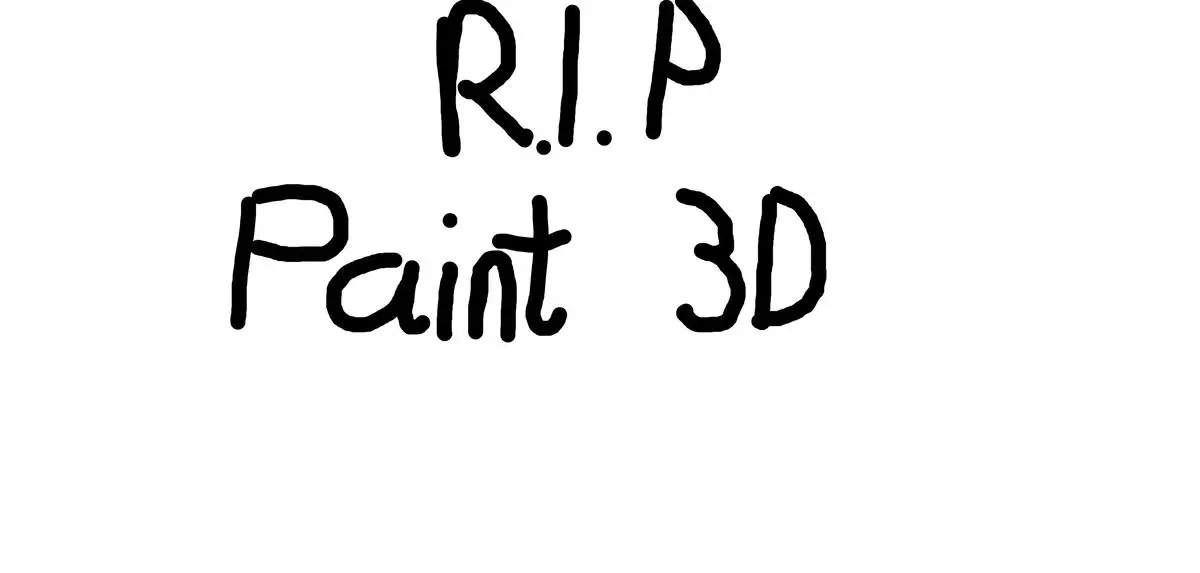The digital landscape has seen numerous transformations, particularly in software development. One staple of the Microsoft Windows operating system has been Paint, a simple yet beloved graphics creation tool. However, as the tech world continues to evolve, so too do the tools we use. Recently, the discontinuation of Paint 3D marks a significant moment in this evolution, raising questions about the future of digital creativity on Windows platforms.
For many, Paint is synonymous with the early days of personal computing. Windows Paint has provided users an accessible platform for digital expression, whether it be childish doodles or more serious artistic endeavors. Its straightforward interface has made it easy for individuals, ranging from young learners to seasoned artists, to create without the steep learning curve associated with more advanced graphic design applications.
Despite its simplicity, Paint has stood the test of time, often keeping pace with the changing demands of Windows users. It became a default application many relied on for quick edits, such as cropping images or drawing basic shapes. This comforting familiarity has resulted in a strong nostalgic connection to Paint, underscoring its significance in the landscape of digital art tools.
In an effort to enrich this legacy, Microsoft introduced Paint 3D as a modernized alternative, aiming to leverage the growing interest in 3D graphics. The updated version offered a suite of tools designed for creating three-dimensional images, making it an intriguing prospect for users looking to explore this dimension of creativity. However, users quickly found that Paint 3D’s capabilities fell short of expectations, particularly when compared to established 3D software such as Blender.
The initial excitement surrounding Paint 3D soon faded as the application demonstrated limitations that rendered it unpopular among enthusiasts. It struggled with features that were already standard in other free applications, which led many to abandon it in favor of more robust alternatives. Reports of laggy start-up times compounded these issues, pushing even casual users back toward the simpler, more efficient original Paint.
Meanwhile, the standard Paint application did not stagnate. Over recent years, it has undergone significant upgrades that enhanced its usability for both novice and experienced users. Notably, Microsoft has integrated AI technologies to streamline image manipulation. Features such as background removal and new brush capabilities have turned Paint into an unexpectedly capable tool, providing a solid alternative to heavyweight programs like GIMP and Photoshop.
Now equipped with AI tools for image creation, Paint has boldly stepped into the realm of generative art, even if this facet may attract mixed opinions among users. The fact that you need to pay for credits to utilize these features is something that differentiates Paint from many of its free-to-use counterparts, but the appeal of having expansive creative tools at one’s fingertips cannot be understated.
The recent discontinuation of Paint 3D has sparked conversations regarding the direction of Microsoft’s toolset and the broader implications for users who have grown with the platform. It serves as a reminder that creativity can manifest in numerous forms, and while the nostalgia for certain software is heartfelt, practicality often takes precedence. For many, the improvements made to the original Paint may deliver the creative outlet sought in a more versatile and accessible format.
As we bid farewell to Paint 3D, we reflect on its willingness to innovate within the confines of digital creation and recognize that the original Paint has adapted and improved, providing a robust solution for image manipulation. Whether you’re a lifelong user or one just beginning to explore the realm of digital art, the evolution of Windows Paint suggests that while some applications may come and go, the essence of creativity remains ever-present and continues to flourish in new forms.

